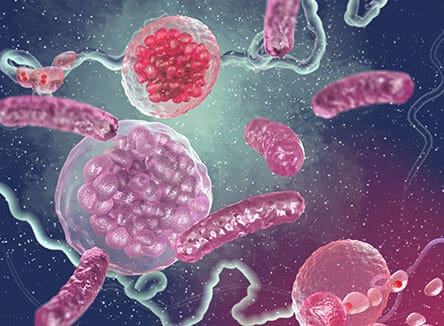
Currently, the incidence of infectious diseases has increased globally, and the pathogens show a trend of diversification and complexity. Rapid and accurate pathogenic diagnosis, which enables early selection of sensitive anti-infective drugs or effective and targeted preventive and control measures, is the core of accurate prevention and treatment of infectious diseases. The epidemic of respiratory pathogens has been bringing a huge disease burden to human beings, as in the case of the global pandemic of novel coronavirus (SARS-CoV-2), which has seriously affected world health and economic development.
Conventional pathogen metagenome next-generation sequencing technology (mNGS) faces the dilemma of diverse sample types and potential pathogens and noisy detection and analysis backgrounds, and efficient de-hosting technology is one of the core secrets for accurate detection. For lower respiratory tract samples, reverse enrichment technology can well reduce the host proportion and significantly improve the sensitivity of pathogen detection.
Facing the need for rapid detection of multiple pathogens at once, multiplex PCR followed by high-throughput sequencing is another method for routine targeted detection. This technique performs PCR reactions of multiple targets in one system by designing multiple pairs of PCR primers that specifically bind to the target region, thus achieving significant enrichment of the target sequence. However, when faced with the need for ultra-multiple pathogens targeting, due to factors such as the upper limit of the number of primers, the hybrid capture approach stands out as more suitable for targeting pathogen enrichment in metagenome analysis.
What is Hybrid Capture Enrichment?
By designing and synthesizing specific probes targeting the target region (human genome or microbial specific region, etc.), hybridizing with the target genomic library DNA containing the target region in the sample, capturing and then performing high-throughput sequencing using a mainstream sequencing platform.
The sample nucleic acid is extracted and then a sequencing library is constructed, and capture probes designed according to the target region are added. The probes can be partially or fully complementary to the target region, and magnetic beads are used to capture the probes, which “grab” the target sequence and subsequently elute the uncaptured region, thus achieving positive enrichment.
Hybrid capture enrichment provides broad coverage of pathogens and offers many advantages when combined with unbiased mNGS. Probe capture enables the detection of intracellular bacteria and fungi without fear of human background interference. Probes can be designed to cover thousands of known important pathogens, while effectively discovering new pathogens or strains. For example, Mycobacterium tuberculosis, fungi such as Candida albicans, viruses such as human herpesvirus type 3, and parasites such as Plasmodium falciparum can be detected by probe capture enrichment sequencing. Hybrid capture combined with high-throughput sequencing can positively amplify the signal of target pathogens and achieve highly sensitive detection of pathogens, which can significantly increase the positive detection rate of body fluids. This is especially true for low abundance (low copy number) and or mixed, diverse pathogenic microorganisms. It also further improves pathogen typing ability with a higher capability of resistance analysis and virulence analysis than conventional mNGS, covering point mutation in resistance genes of clinically important bacteria such as Mycobacterium tuberculosis. For research, hybrid capture sequencing allows epidemiological analysis such as pathogen strain typing and phylogenetic analysis, exploration of pathogen genome characteristics, identification of variants (such as inDels) and mobile genetic elements, etc.
Hybrid capture enrichment combined with mNGS can improve the sensitivity of pathogen detection and solve the pain point of difficult-to-detect samples, which is another tool for the accurate analysis of infection.